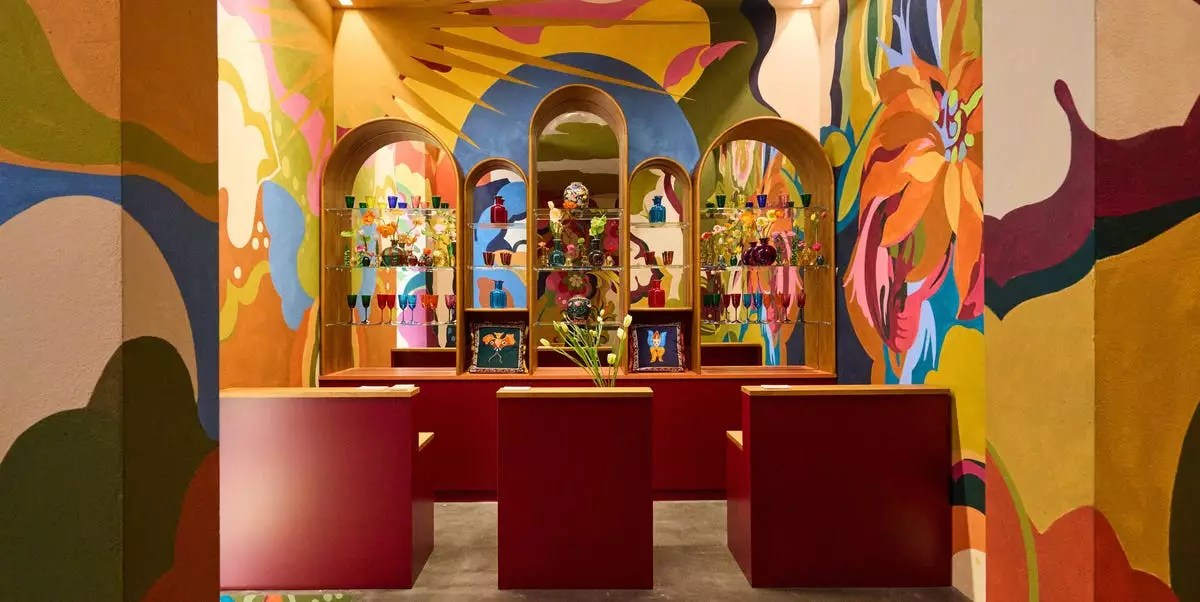The annual Salone del Mobile in Milan continues to assert its position as a pinnacle event in the design world, and this year’s presentations are no exception. The Spanish luxury brand Loewe exemplifies this creative spirit through an ambitious collaboration with a diverse assembly of 25 artists, designers, and architects. With newly appointed creative directors Jack McCollough and Lazaro Hernandez at the helm, Loewe’s initiative showcases teapots that transcend mere functionality, elevating the act of tea-making into a profound commentary on craft and culture.
Among the creators involved are distinguished names such as Edmund de Waal and David Chipperfield. Each artist brings a unique interpretation of tea-drinking customs, crafting pieces that oscillate between the explicit and the abstract—a reminder of how everyday objects can encapsulate broader narratives. This dialogue between tradition and contemporary design goes beyond aesthetics, inviting patrons to rethink their relationships with the objects that populate their lives. Alongside these bespoke teapot creations, Loewe is rolling out a homewares collection that includes leather charms and coasters, further solidifying its commitment to merging artisanal craftsmanship with modern luxury.
Prada Frames: Navigating Connections Between People and Ideas
Prada’s participation in Salone takes on a critical discourse with its “In Transit” symposium, examining the complex infrastructures that facilitate the movement of ideas and people. This topic resonates profoundly in our interconnected age. The symposium itself is staged in historically rich environments, like the restored ’50s Arlecchino train, which eloquently links the concepts of transit and design. The choice of Padiglione Reale at Milan’s Central Station—a space once reserved for dignitaries—highlights the intrinsic value of design in fostering connections and creating communal experiences.
The themes explored during the symposium echo the challenges and opportunities presented by our contemporary society’s evolving landscape, reiterating the importance of design as a tool for dialogue and understanding. By choosing to emphasize infrastructure, Prada intelligently addresses the broader implications of design beyond mere aesthetics; it prompts inquiries into how we navigate and shape our world as individuals and communities.
Louis Vuitton’s Home Collections: A Playful Fusion of Luxury and Art
Louis Vuitton’s unveiling of its Home Collections at the stunning Palazzo Serbelloni further cements its status as a forerunner in integrating high fashion with interior design. This year’s showcase is not merely an extension of the brand’s storied tradition but an invitation to reframe luxury living through playful innovation. Pharrell Williams’ influence is reflected in a design inspired by the classic pinball machine—a symbol of enjoyment and nostalgia. Such whimsical touches alongside more traditional homeware invoke a sense of joy, affirming that luxury does not have to be staid or serious.
The intersection between high art and home decor is expertly illustrated through Louis Vuitton’s collaboration with renowned designers, such as the Campana brothers. These partnerships yield unique pieces that elevate the concept of the home from a functional space to an artful representation of personal identity. Such redefinitions challenge consumers to see their living spaces as continually evolving works of art.
La DoubleJ: Celebrating Local Culture and Positive Energy
Not one to shy away from audacity, Milan-based La DoubleJ is celebrating its ten-year anniversary with the launch of its new headquarters—dubbed the “LDJ Starquarters”—in the lively Navigli district. This vibrant structure not only seeks to harness positive energy but acts as a hub for creativity, offering a plethora of experiential events, from tarot card readings to sound healing sessions in a rooftop Gong Temple. Such initiatives reflect a growing trend in the design world that recognizes the need for holistic well-being within creative spaces.
La DoubleJ’s commitment to local heritage is palpable in its beautifully crafted Napoli Rosa homeware collection, showcasing the brand’s dedication to celebrating Italian craftsmanship while encouraging a dialogue between the past and the present. Through such endeavors, La DoubleJ is not merely participating in Salone; it is crafting an experience that emphasizes community, culture, and connection.
Gucci’s Bamboo Encounters: A Journey Through Material History
Amidst the hustle and bustle of Milan’s Salone, Gucci curates a thought-provoking exhibit titled “Bamboo Encounters” at the enchanting Chiostri di San Simpliciano. With bamboo as its focal point, this show delves into the material’s entwined narrative with Gucci’s legacy. This exploration is more than an homage; it represents a critical examination of how materials can embody deeper cultural significances. Architect Ippolito Pestellini Laparelli curates a myriad of multidisciplinary works including sculptures and bamboo crafts that challenge audiences to contemplate the ethical implications of material usage in fashion.
This appreciation for the stories woven into fibers and forms aligns perfectly with contemporary movements towards sustainability and mindfulness in design. Gucci’s exhibit therefore transcends typical luxury branding—it cultivates a richer understanding of craftsmanship that is essential in today’s conscious consumer landscape. The display prompts visitors to reflect upon the origins of luxury and the resources behind it, making it a salient commentary on the evolving nature of design ethics.
Through these distinct yet complementary presentations at Salone, brands are carving out new narratives that champion design as a potent catalyst for conversation, culture, and community. In an era awash with rapid change, these events serve as a reminder of the timelessness of craftsmanship, the power of collaboration, and the essential role that art plays in forging lasting connections among people and ideas.


Leave a Reply